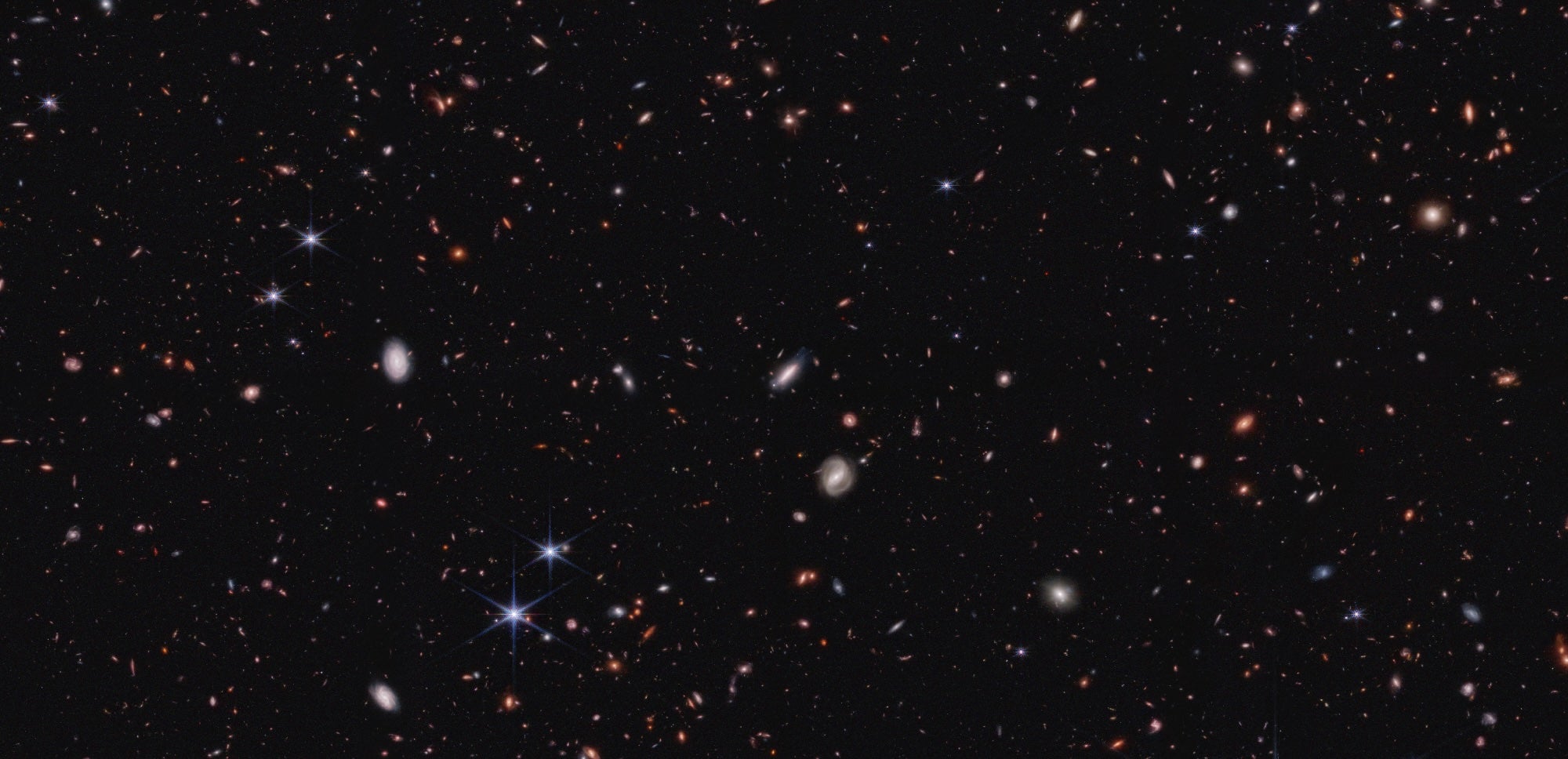A group of international astronomers have discovered three mysterious, ultra-massive galaxies in the early universe.
The galaxies – systems of stars, gas, dust, and dark matter – appear in a view from NASA’s James Webb Space Telescope like creepy, blood-red glowing eyes. They get their striking color from their extreme amount of dust.
Nicknamed “Red Monsters,” they are each nearly as massive as the Milky Way, and had assembled within the first billion years after the Big Bang: the event that is believed to have created the universe.
The galaxies indicated to researchers that the formation of stars in the early universe was far more efficient than they had previously thought, challenging current models of galaxy formation. Until this research, it was believed that all galaxies formed gradually within large halos of dark matter that capture gas into structures bound by gravity.
“Many processes in galaxy evolution have a tendency to introduce a rate-limiting step in how efficiently gas can convert into stars, yet somehow these Red Monsters appear to have swiftly evaded most of these hurdles,” University of Bath Professor StijnWuyts, said in a statement.
Wuyts was a co-author of the work published Thursday in the journal Nature. The study was led by the University of Geneva.
The discovery was made as a part of the James Webb Space Telescope FRESCO survey program, which utilizes the telescope’s unique instruments for observations.
Using the telescope’s Near Infrared Camera, or NIRCam, the researchers were able to study the distances and characteristics of the galaxies in their constituent wavelengths of light. The telescope’s capabilities have allowed astronomers to peer through dust-obscured areas.
Previously, collaborator Dr. David Elbaz, the director of research at CEA Paris-Saclay, said properties of the “Red Monsters” were “hardly determined” because the galaxies are “optically invisible due to dust attenuation.”

The “Red Monsters” are forming stars nearly twice as efficiently as lower mass galaxies from the same epoch, or ordinary galaxies at later times in cosmic history.
These findings don’t conflict with the basic model of the universe, they raise questions about galaxy formation theories. Future observations using the telescope and the Chile-based Atacama Large Millimeter Array telescope will help to provide further insights into the galaxies.
“These results indicate that galaxies in the early Universe could form stars with unexpected efficiency. As we study these galaxies in more depth, they will offer new insights into the conditions that shaped the Universe’s earliest epochs,” Dr Mengyuan Xiao, lead author of the new study and postdoctoral researcher at the Unviersity of Geneva, said. “The Red Monsters are just the beginning of a new era in our exploration of the early Universe.”







